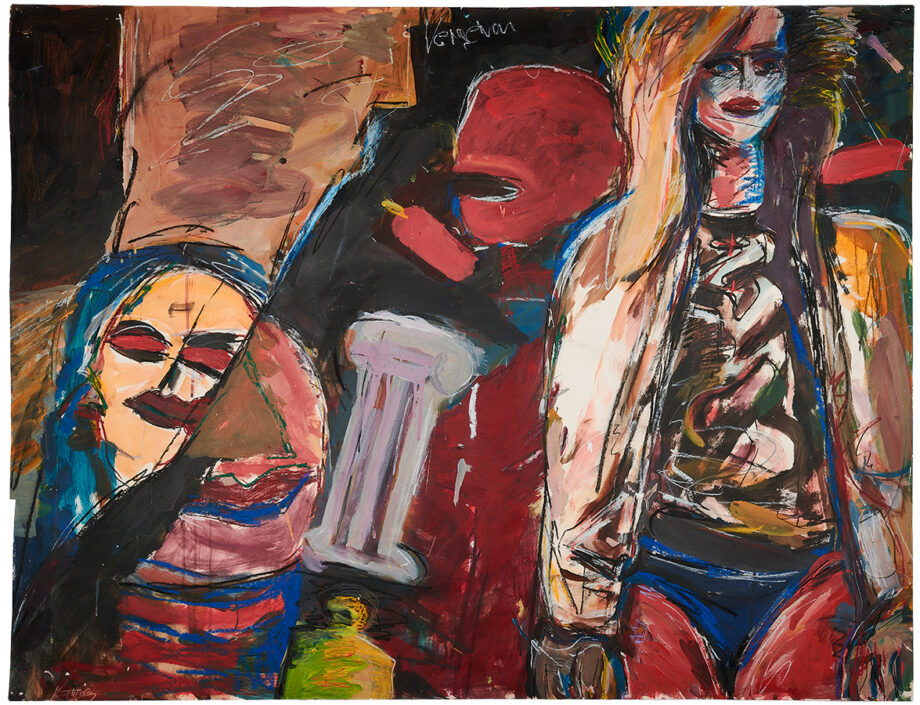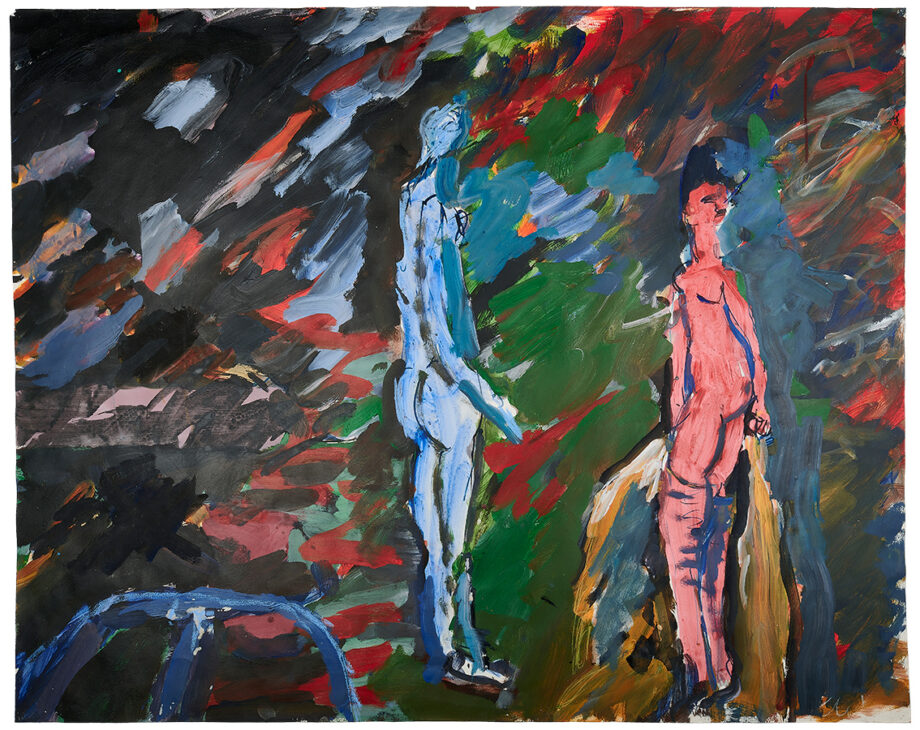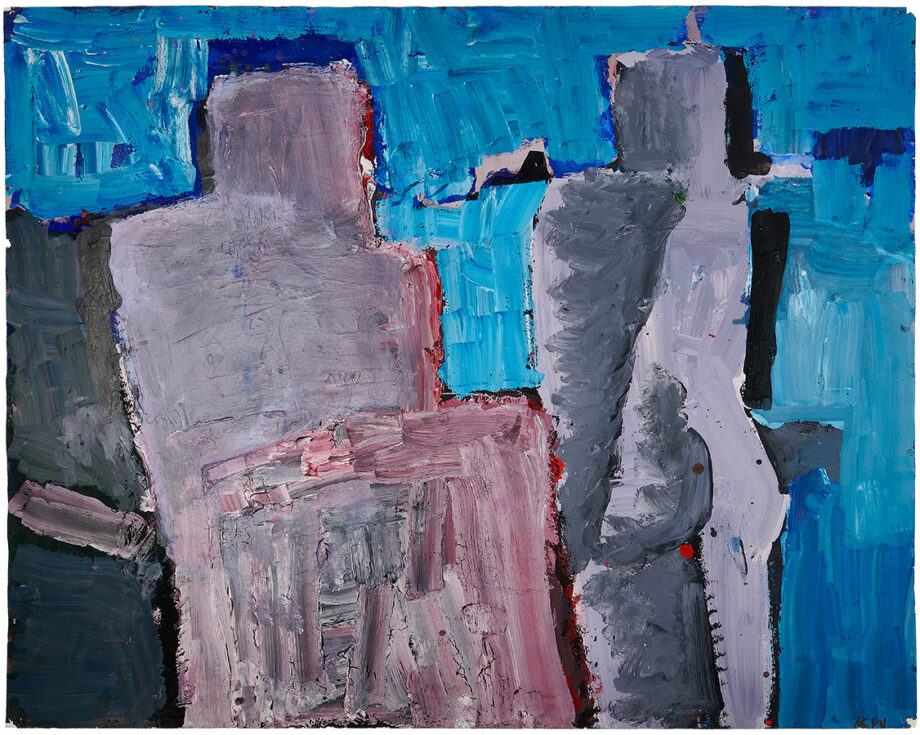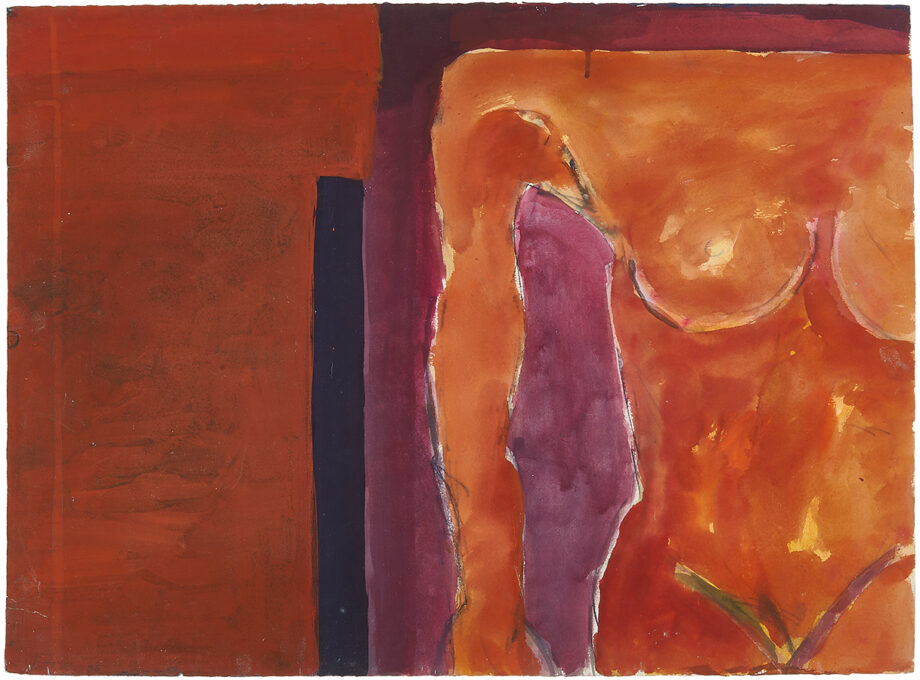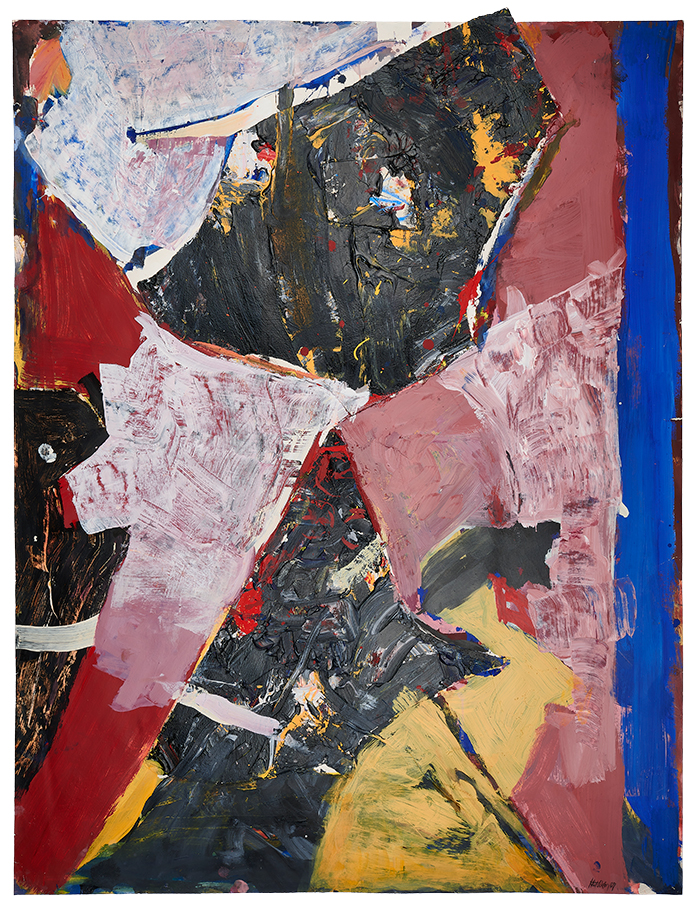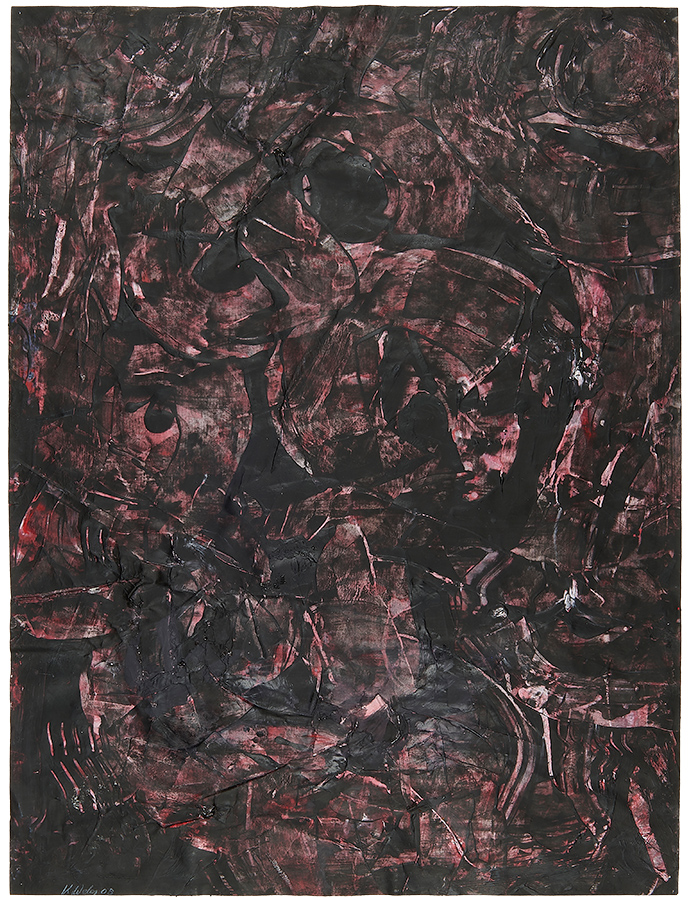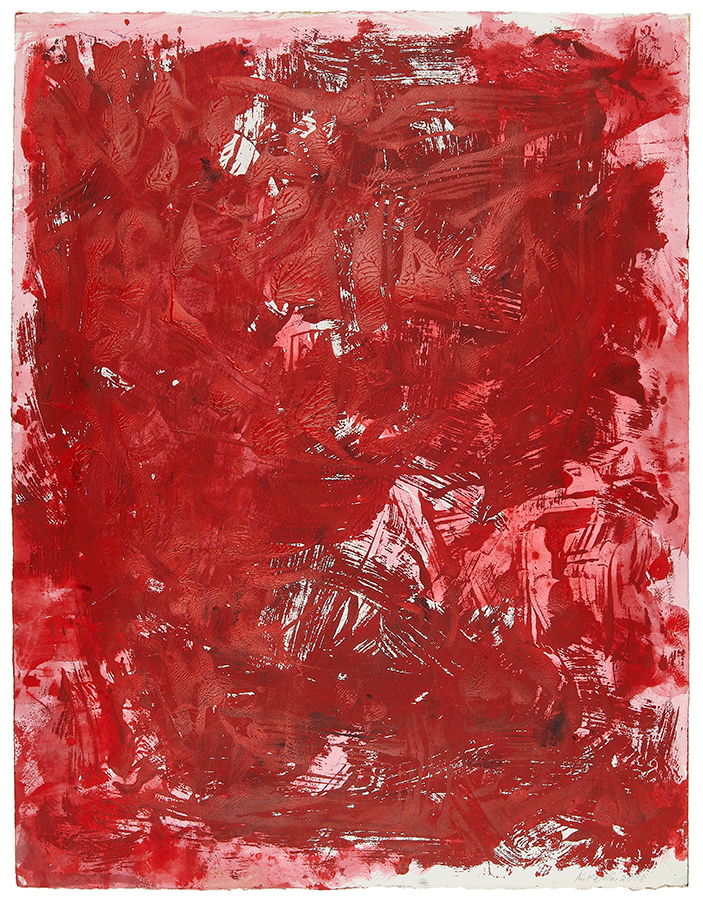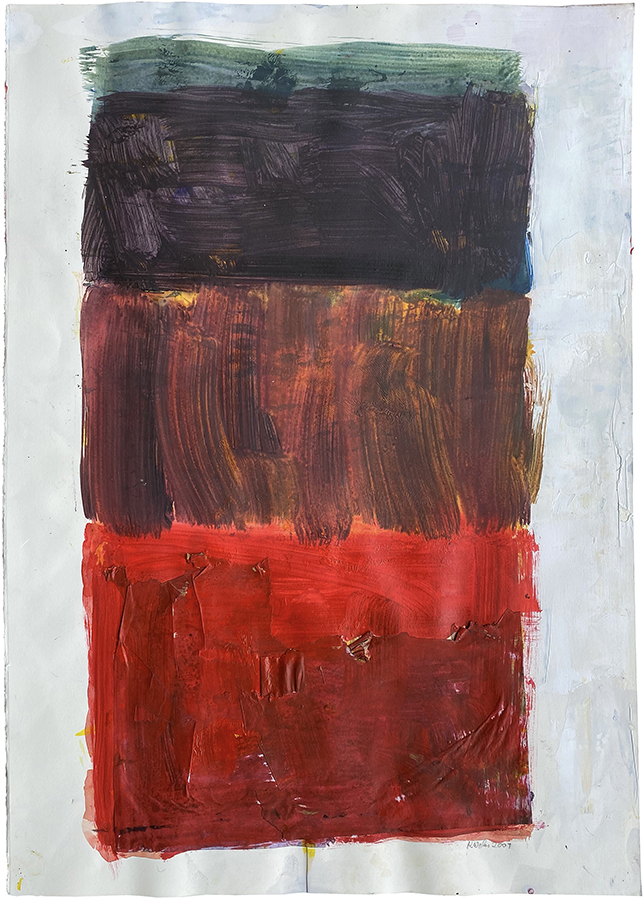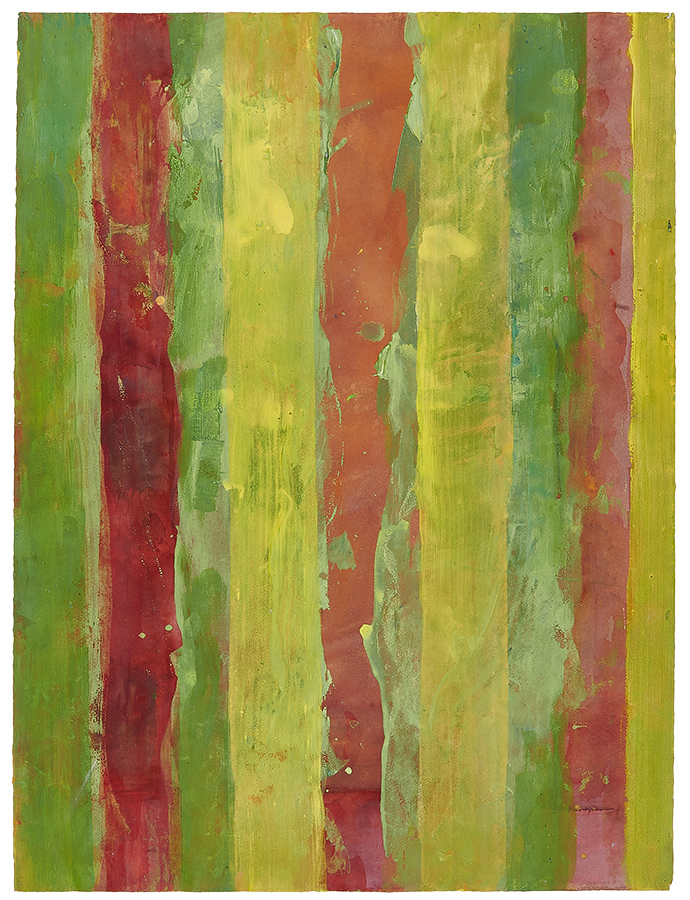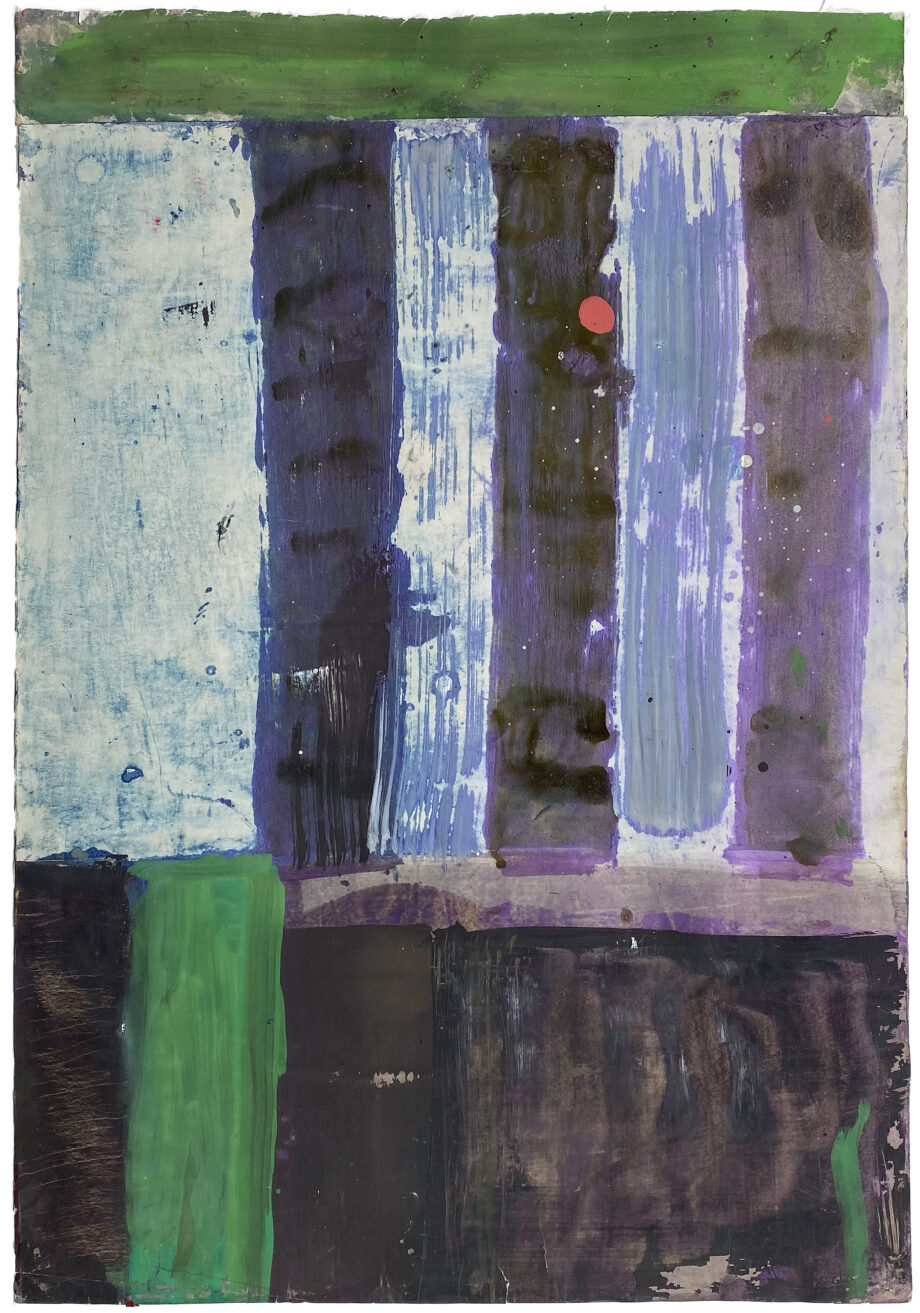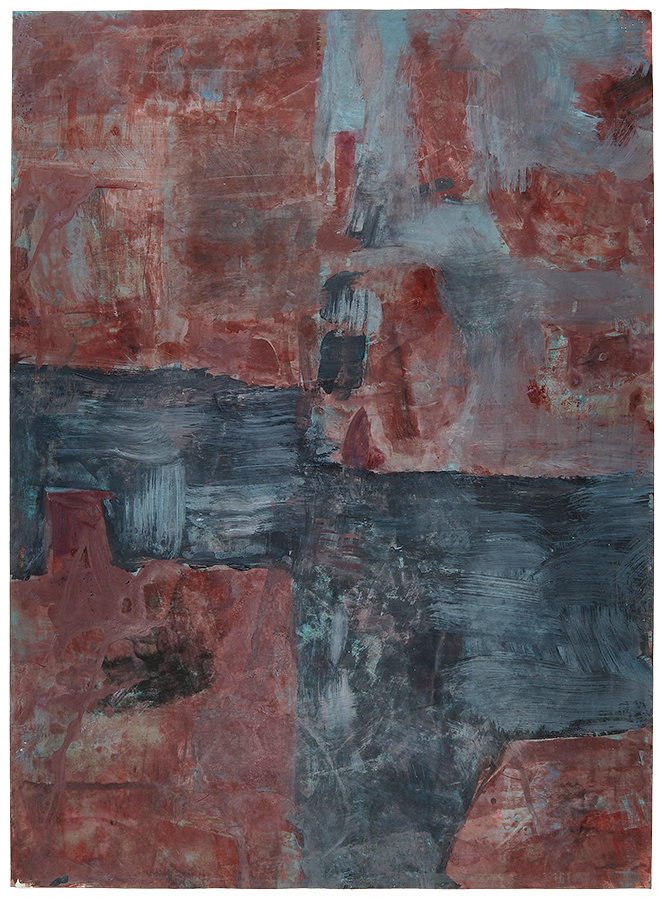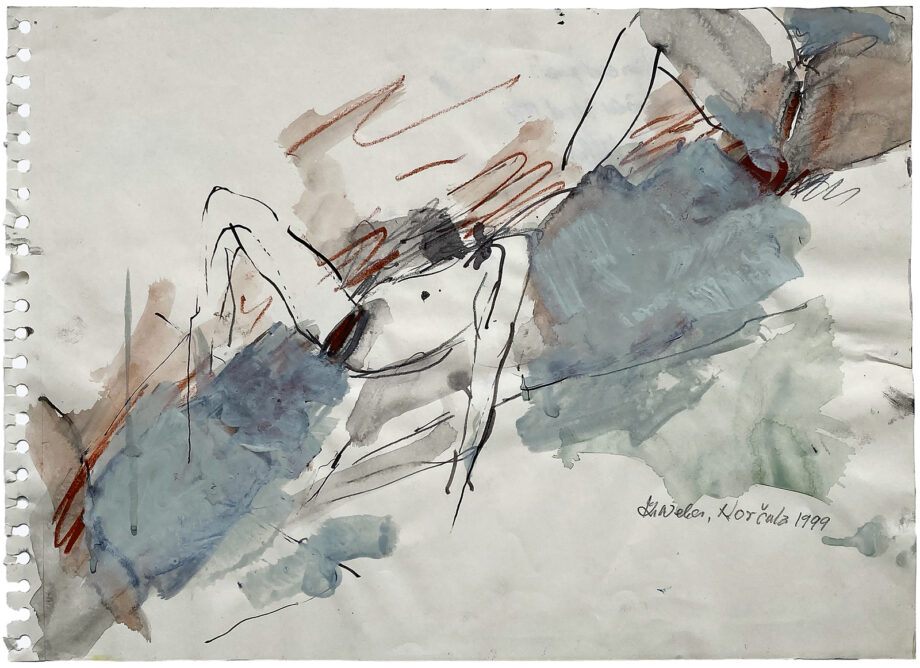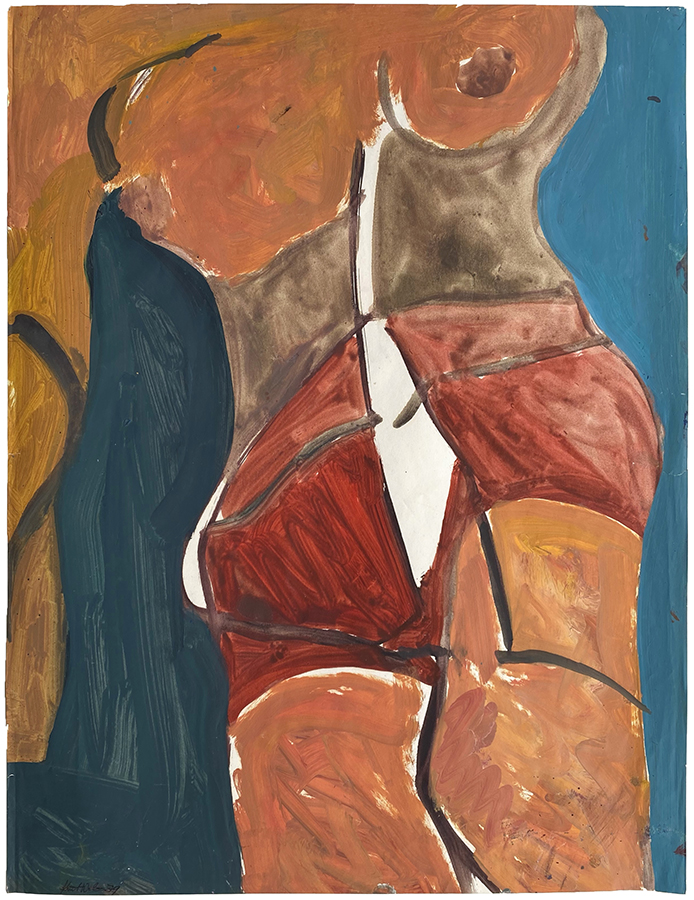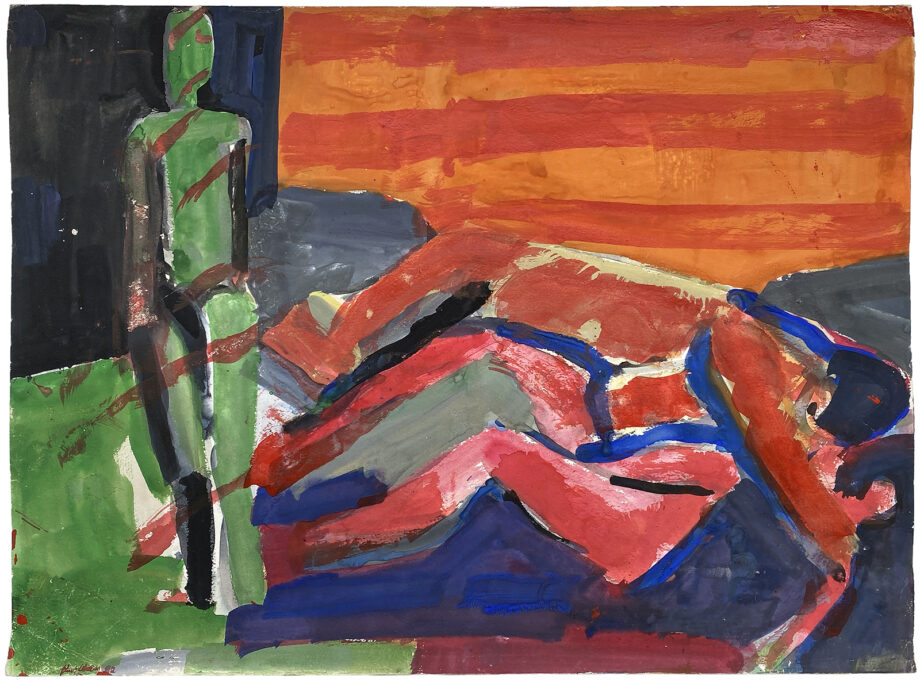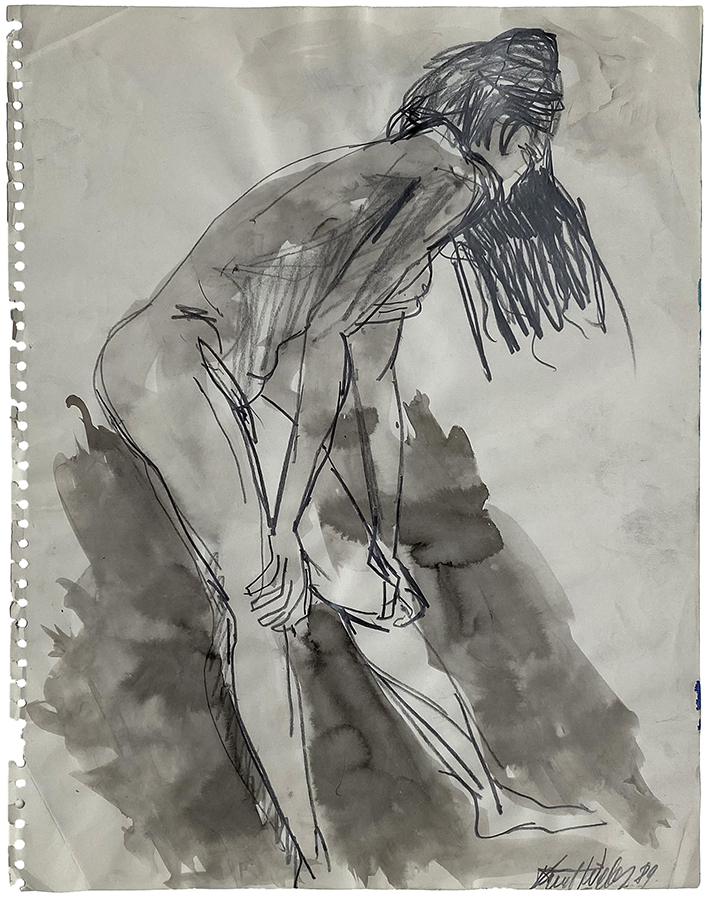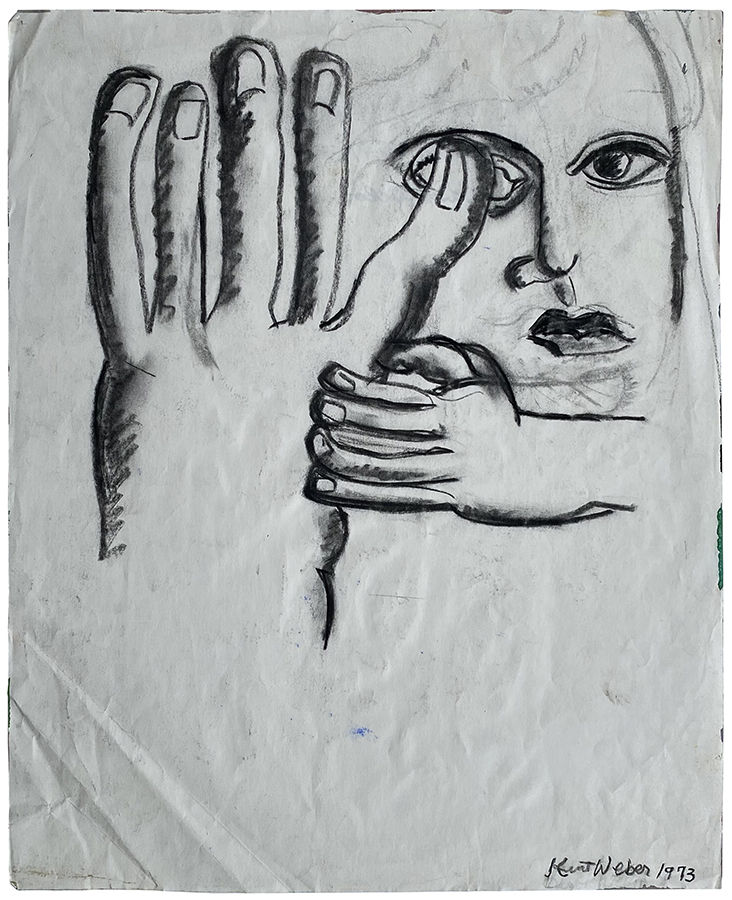Kurt Oskar Weber
I always and I mean always did things because I had the desperate hope that they would transform me. I only did them for that purpose, to be transformed, not to be me any longer. I really didn’t care what it was I did, as long as it permitted me for as short a time it might be to escape myself. Therefore Art, paintings afforded me to become someone else. Metempsychosis.
Kurt Oscar Weber
Kurt Oskar Weber (1938, Zurich – 2011, Basel) was a Swiss-American fine artist, internationally recognized through his ouvres of paintings, drawings and sculptures. Weber’s was a lifetime devoted to travel and discovery. In the arts, he explored everything from the old masters of the Renaissance to Cubism, Expressionism and artistic expressions he witnessed, directly through the post painterly abstraction after the 1950s, while Basel, Paris, New York, Mexico and California were just some of his life stations. With a keen knowledge of art and an open mind, he drew inspiration from the forms, colors, spaces, lights, ambiences and atmospheres of the places he visited. It shaped and changed his creative work, mostly paintings and drawings, in palette and motifs, and led to a specific artistic expression through which various iconographic references, ideas, styles converged. Encouraged at the beginning of his career by the advice of his compatriot Alberto Giacometti that he should experiment, Weber directed his art toward the process as a key constitutive and conceptual element in his work from figuration to color field paintings. “From forms”, Weber wrote, “ I’ll move to void in an attempt to paint out all incidents and influences ‘ till there is nothing left. I’ll defy the gravity, then watch electricity race through a crystal clear bulb; take the deposits of past cultures and give them forms that aren’t nameable and have no home. I will live in them”
Kurt Oskar Weber started his art education in Zurich (1955-1958) at the Kunstgewerbeschule and continued his painting studies at the atelier of the famous André Lhôte, founder of the Académie d’Art in Montparnasse in Paris. Weber’s formative years in art were also marked by his stay in Italy where he was studying the Italian Renaissance masters as well as by his studies with world-renowned painter Oskar Kokoschka in Salzburg, Austria. As an art historian Andrin Schütz once pointed out “From the Middle Ages to 1960: It would be hard to find a painter that Kurt Weber had not studied”, referring to the fact that Weber’s eclectic knowledge of art was significantly integrated in his practice. Paris in the late 50s and early 60s, the specific cultural atmosphere of the city, meetings with reputable artists and philosophers like Jean Paul Sartre, had a huge influence on young Weber. Besides Lhote, Pablo Picasso and Fernand Léger also contributed to Weber’s early years in art, but the greatest impact was by his compatriot and friend Alberto Giacometti. It was Giacometti, who advised and inspired Weber to develop his own artistic style and expression, which led him to start with new techniques and painting processes, including the “use of mixed media, pigments, and bright, vibrant colors on various canvasses and placement boards.” With the encouragement of Giacometti, Weber traveled to the United States which wouldl become his second home for the next several decades, but it would l also open a new chapter in his artistic practice. In New York, Weber was introduced to the fresh tendencies in abstract expressionism or more precisely to thepost-painterly abstraction movement which makes a turn toward the exploration of the basic elements of the medium itself. In the same period Weber began visiting Mexico regularly, discovering the historic monument legacy of the Maya and the Aztec civilisations. The breadth and spatiality of American abstract painting, as well as Mexico’s luminous colors, introduced Weber to different approach in painting. If Weber’s paintings at the beginning were characterized by grey, umber, blue intonations and massive form constructions, in America they became more and more devoted toexperiments with color. With his experience of American everyday life, culture, urban environments came a new motif repertoire and the landscape of the American West would leave permanent traces in his future r artistic expression. The visual sensation of this new spatiality and light, led professionals Katherine Cook and Peter Frank, who followed and wrote about Weber’s works, to emphasize in his color filed paintings which recapitulate strategies of American abstract expressionism but also embody European sensibility. “…being European painter”, says Peter Frank, “simply makes Weber a particular kind of American painter, a painter whose eyes may have been Americanized upon beholding American space, but whose hands remain sensuous and intimate, i.e. European in their response. The scale of Weber’s paintings may be American – the vastness of his canvases and even works on paper evokes not mural or fresco, but rugged, light- filled terrains- but the elaboration of their surfaces and modulation and interrelation of their colors bespeak the exploitation, not the rejection, of classical harmony and virtuosic craft.” Weber’s extensive knowledge on art history and especially painting is actually the base of his artistic style, often hard to define and affiliate. “l am skeptical of style”, Weber would say, ”It is a commodity and pays attention only to the outside. Each time I feel its boundaries, I have to escape. I am too curious about everything else… In the process, I reveal myself.” Transversal in its core Weber’s expression in art is inseparable of his restless spirit as he once described in a note to Katherine Cook:” And I don’t know of anyone, who travelled that much, changed skins that many times, took chances without regrets, absorbed and lived in so many cultures and crossed ideas like crossed continents.” Weber’s main concern was the synthesis of different elements, the intersection of painterly legacies from Renaissance to Abstract expressionism with a constant quest to establish “new dialogue with history and reshape it”. The diversity, richness and specificity of the Weber’s production presented in posthumous retrospectives in his native Switzerland, indicate that there is more to be learned about the artist who explored the inbred power of materials, played and experimented with techniques, styles, concepts and finally succeeded in developing his own artistic vision driven by the desire for continuous journey and the (re)discovering of territory of art and painting.
Read More Close
KURT OSCAR WEBER
Born 1938 in Zurich, died 2011 in Basel, Switzerland
EDUCATION
1963
Studio Stanley Hayter, Engraving and Lithography in Paris, France
1959
Andre Lhote at the Academy of Painting
1955-1958
School of Fine Arts, Zürich, Switzerland
SOLO EXHIBITIONS
1965
Workshop Gallery, Studio East, New York
1971
Valley House Gallery, Dallas, Texas
1981
Retrospektive in der Galerie Inter Art Basel, Switzerland
1985
Galerie Stella Polaris, Los Angeles, California
1986
Galerie Hatley Martin, San Francisco, California
1988
Galerie Hatley Martin, San Francisco, California
1991
Galerie et Edition Lilian Andrée, Basel, Switzerland
1992
Galerie Hilt, Basel, Switzerland
1994
Centre d’Art d’Ivry, Galerie Fernand Léger (download catalogue), Paris, France
1995
Galerie Marie-Louise Wirth, Zurich, Switzerland
1999
Kurt Weber: Retrospective, Le Coq Rouge, Lörrach, Germany
2002
Galerie Lilian Andrée, Basel, Switzerland
2004
Ambassade Suisse, Paris, France
2005
Galerie Lilian Andrée, Basel, Switzerland
2009
Sammlung Galerie S/Z, Zurich, Switzerland
2010
Southern Landmarks, Sammlung Galerie S/Z, Zurich, Switzerland
SELECTED GROUP EXHIBITIONS
1962
Salon de Mai, Musée d’Art Moderne, Paris
1963
Salon de la jeune Peinture, Musée d’Art Moderne, Paris
1973
Galerie Troup, Texas
1986
First Emeryville Annual, San Francisco, California
1989
The Western National Annual, The Brooklyn Museum, New York
2000
Yellow: The First Color, Bedford Gallery, San Francisco, California
2003
Galerie Darthea Speyer, Paris, France
Kurt Oskar Weber worked and lived intensively, not caring about preserving evidence. ds art makes a modest contribution to those who strive to collect and systematize data about Kurt Oskar Weber and thus enable and facilitate future research into the life and work of this significant artist.
Pariscope, Kurt Weber à l’Ambassade de Suisse, Paris, Peintures récentes. Kunstbulletin, April 2004, Switzerland
Tobey. Mark, Art contemporain, Kurt Weber, 2003.
Frank. Peter, KURT WEBER – AMERICAN SPACE, Centre d’Art d’Ivry, Galerie Fernand Leger, 1994.
Pierre-Marc-Levengeois, Kurt Weber, The Palimpset of Cities. Le Nouveau Quotidien, Lausanne, Switzerland
Laurent Wolf: “Kurt Weber, L’Homme qui va là où est la Peinture”. Radio France Internationale, Allemagne. Arts plastique: Ironie et dérision, Ville d’Ivry: Actualité Culture
Catalogue de l’exposition à la Galerie Fernand Léger, Ivry sur Seine. Cimaise, Revue d’Art, Paris, 1993.
Tansitions-California-Basel Doppelpunkt (Revue d’Art), Exposition Galerie Hilt, Basel, Switzerland, 1992.
Kurt Weber at Lilian Andrée, Basel, Switzerland; Siegmar Gassert, 1991.
Kurt Weber at Hatley Martin, San Francisco, Clifford Schwartz, 1986.
“A Swiss Painter in America”, Basler Zeitung, Basel, Switzerland, 1981.
14ème Salon de la jeune Peinture. Catalogue de l’exposition, Musée d’Art Moderne, Paris, 1963.

